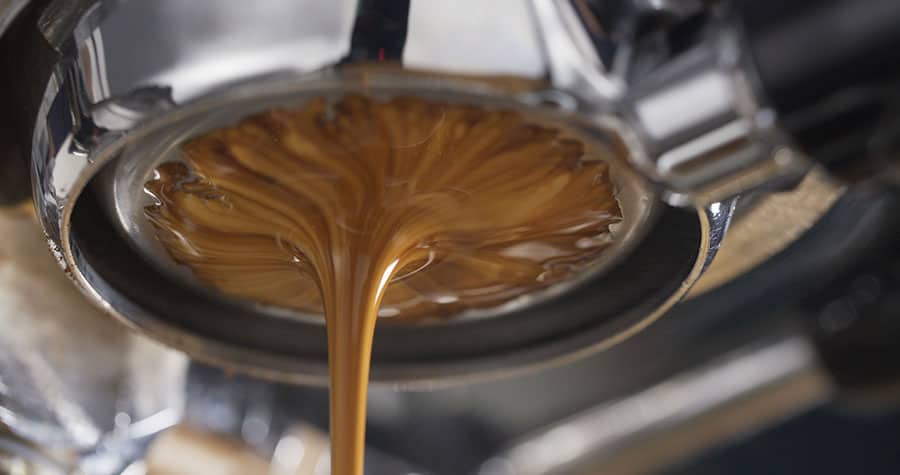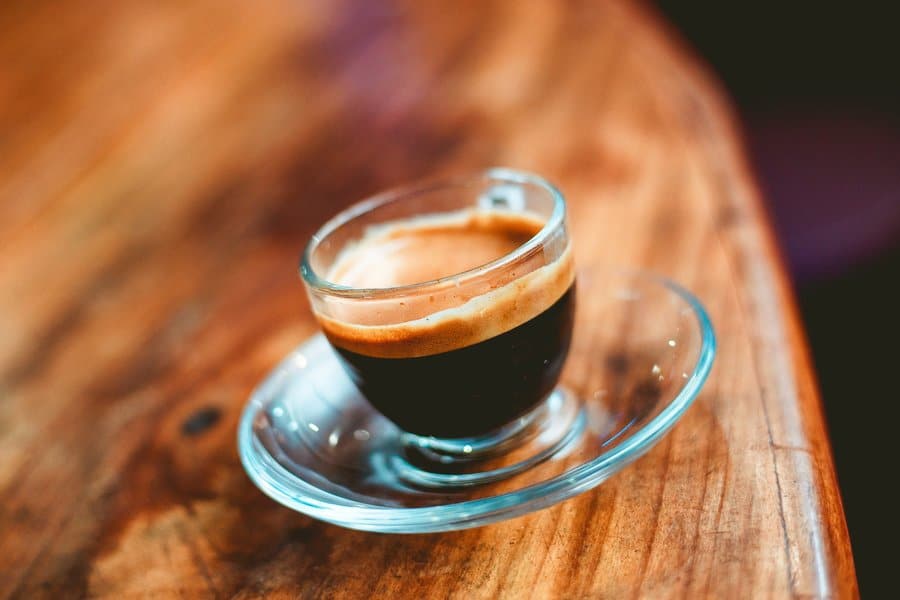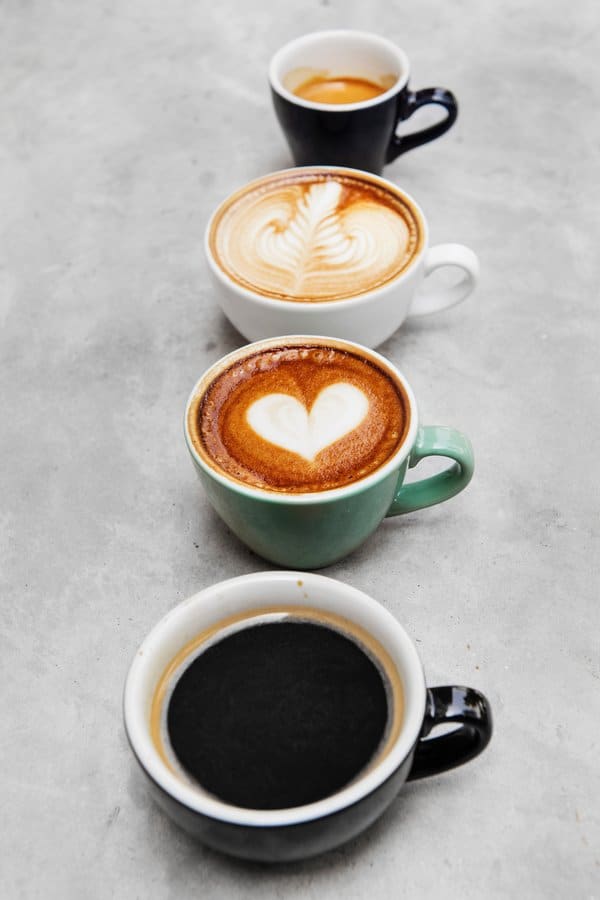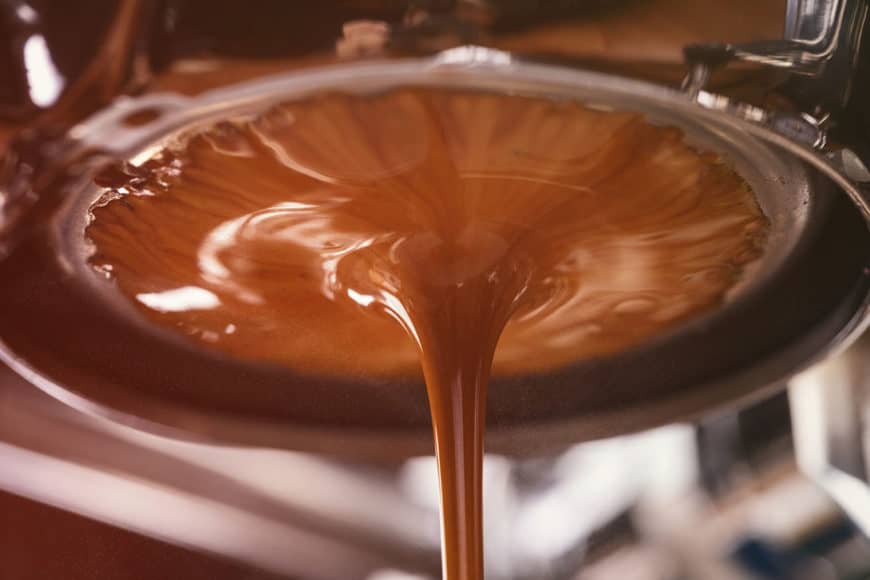
Espresso is a concentrated coffee drink that is made by pushing 1 or 2 oz of heated water through coffee that has been finely ground and put under intense pressure . Its is considered a type of brewing method and is made from the same beans as regular coffee.
From my experience at the coffee shop, I find that a lot people have only a vague idea of what an espresso coffee is and are not exactly sure the best way to drink it. According to them, it’s stronger than regular coffee, served in tiny little cups, and has its origins from Italy.
Today, we’re going to be exploring the history, features, and making of espresso. It’s a much more complicated process than you might have anticipated so lets get started!
What makes a good Espresso?
Although certain species of coffee bean are favored by espresso drinkers for their nuanced flavor profiles and strength of flavor, you can technically make espresso from literally any kind of coffee bean.
A good shot of espresso should have a strong aroma and a rich, complex flavor profile that could be full of floral, bitter, chocolatey, smoky, and even cinnamon-y notes.
This is because the super hot, highly pressurized brewing process preserves many of the natural aromas and oils from within the coffee grounds.
These aromatic oils are usually lost during the prolonged brewing process of regular coffee. Good espresso should also create a thicker, more velvety sensation in your mouth than a regular cup of coffee.
This can also be attributed to its different brewing process — espresso coffee grounds spend much less time exposed to hot water than regular coffee grounds, which means that there’s less time for the acidic flavors of the coffee beans to seep into the finished beverage.
Finally, a good shot of espresso should be significantly less acidic than regular coffee.
Where Does Espresso Come From?
The very first predecessor to the espresso machine was invented in 1884 by Angelo Moriondo, who lived in the city of Turin in northern Italy. In 1901, a Milanese inventor, Luigi Bezzera, patented his own, improved version of the espresso machine, which is very close to the espresso machines that we know and love today.
Over the first few decades since their invention, espresso was a niche coffee variety mostly confined to espresso bars in Italy, which also served classic Italian pastries like biscotti and cannoli.
However, in between the 1950s and the 1990s, espresso became increasingly popular in the United States, thanks to the invention and meteoric rise of the latte. (Lino Meiorin, co-owner of the old Caffe Mediterraneium in Berkeley, California, claims that he single handedly invented the latte in the 1950s.)
During the 1950’s, most American espresso drinkers were working-class Italian expatriates living in cities like Boston, New York, and San Francisco.
Nowadays, espresso is a much more upscale, upmarket beverage, enjoyed by people of all ages, nationalities, ethnicities, and classes. A lot of espresso’s current popularity can be attributed to Starbucks, which moved espresso bar and café culture into the mainstream.
What is the difference between Espresso and Regular Coffee?
The biggest difference between espresso and regular coffee is the brewing method. Regular drip coffee is made by slowly filtering hot water through coffee grounds.
A shot of espresso takes much less time to make. Espresso machines take pressurized, super hot water and force it through small cakes made out of tightly packed coffee grounds.
The whole brewing process takes about 30 seconds, as opposed to a regular coffee machine, which can take up to 10 minutes to brew a full batch. The end result? A super strong, super concentrated, super caffeinated, and super flavorful shot of espresso! ( did I say super enough?)
What is Espresso Crema?

Coffee fanatics can spend hours on end tweaking their home espresso machines in the hopes of achieving the perfect crowning cap of crema on top of their espresso shot.
But what actually is crema? Crema is a layer of foam that rests on top of a shot of espresso for about 40 minutes after it’s been brewed. It’s unique to espresso, which means that it won’t ever form on top of regular brewed coffee.
During the espresso brewing process, an espresso machine forced highly pressurized, very hot water through a cake made of coffee grounds. This immense force and heat changes the way that the oils within the coffee grounds interact with the water.
When espresso leaves the machine and enters a cup, the extreme change from a super high pressure environment to a super low pressure environment causes the carbon dioxide molecules trapped within the coffee oils to break free, bubbling to the top and creating foamy crema.
Ideally, the perfect crema should be thick and fluffy, dense enough to support a spoonful of sugar.
The color and consistency of your crema can also help you fine-tune your espresso brewing process. If your crema is very light-colored, with visibly large bubbles, your espresso is probably under-extracted and will taste too watery or weak. If your crema is very dark-colored, your espresso is probably over-extracted and will taste unpleasantly bitter.
If you’ve ever visited an artisanal coffee shop or espresso bar and ordered a shot of espresso, your coffee may have been served with a glass of mineral water and a twist of lemon.
For the espresso uninitiated, this might have been a little confusing. Generally speaking, mineral water or sparkling water is served with espresso as a palate cleanser.
Types of Espresso Drinks
There are a variety of different sizes of espresso shots, the most popular include what is called a doppio, ristretto, and lungo. Lets go into further detail on each one of these so you can read about the differences of each one.
Doppio
An espresso doppio is a double shot of espresso, generally measuring 60 milliliters instead of the standard 30 milliliters. It’s just as strong as a regular single shot of espresso; the only difference between a single shot and a doppio is their volumes.
Ristretto
An espresso ristretto is about half the size of a regular shot of espresso, but it has double the strength. Espresso ristrettos are made using the same amount of coffee grounds, but half the amount of water, creating a stronger, thicker, and richer result.
Lungo
An espresso lungo is the opposite of an espresso ristretto. It’s made with the same amount of coffee grounds, but double the amount of water, creating a weaker shot with double the volume of a regular single shot of espresso.
What Coffee Drinks Are Made with Espresso?

In addition to a straight shot of black espresso, there are also a plethora of espresso drinks, which also include add-ins like milk, water, ice, sugar, and syrups on top of regular espresso. The menus of many cafés and coffee shops are built off of these espresso drink variations.
Cappuccino
A Cappuccino combines equals parts of espresso, steamed milk, and foamed milk.
Caffe Latte
A Latte is another wildly popular espresso variety. It is made using the same ingredients as a cappuccino, but with a different ratio. A typical latte is made using 2 ounces of espresso, 10 ounces of steamed milk, and about 2 milliliters of foamed milk.
Caffe Americano
Americanos are the final basic espresso drink variation. They’re made using 2 ounces of espresso and 3 ounces of hot water, making them relatively similar to regular drip coffee.
Flat White
Flat white coffees are a great option for people who don’t like their coffee to be too strong. They’re made with 2 ounces of espresso and 4 ounces of steamed milk.
Mochas
Mochas are an excellent option for people with a serious sweet tooth. In addition to 2 ounces of espresso and 1 ounce of steamed milk, they also contain almost 2 ounces of liquid chocolate.
Iced Espresso Based Drinks
If you already know that you prefer iced coffee over hot coffee, but you’re still want to try an espresso, you might want to try:
Café con hielo
This is simply a shot of espresso served over ice
Affogatos
This delicious dessert coffee is made by pouring 2 shots of espresso over a scoop of vanilla gelato or ice cream.
Con pannas
Another delicious dessert, this coffee drink is made by combining 2 shots of espresso with a towering twist of delicious whipped cream
Final Thoughts
Before reading this, you might have thought that espresso was just a tiny little cup full of stronger, more heavily caffeinated coffee.
Although that’s a very understandable and common misconception, it couldn’t be farther from the truth! Espresso-making is a highly complicated, nuanced, and interesting process.
Plain espresso itself has a wide range of varieties, differing in volume and strength. There are also an almost infinite number of espresso drinks, which combine ingredients like cream, milk, sugar, ice, chocolate, and whipped cream to create a plethora of delicious treats!


